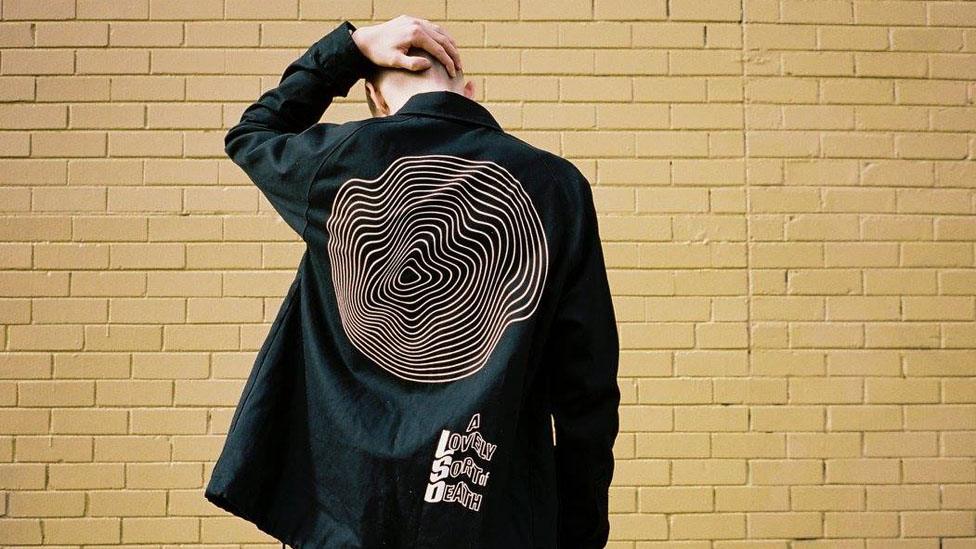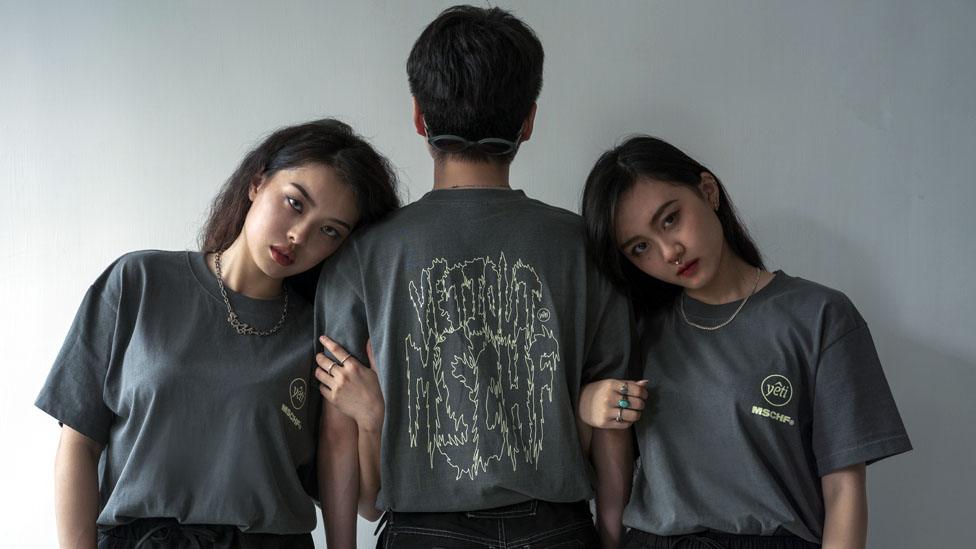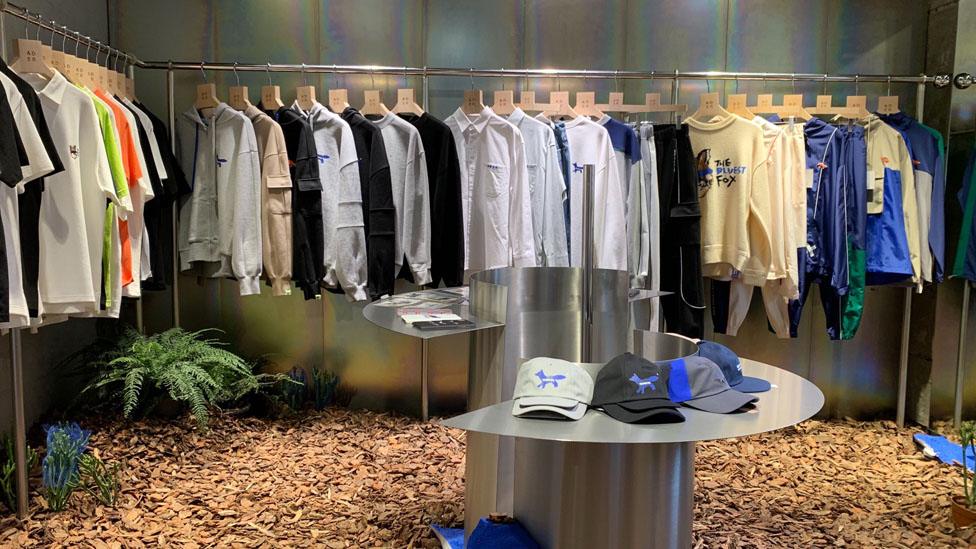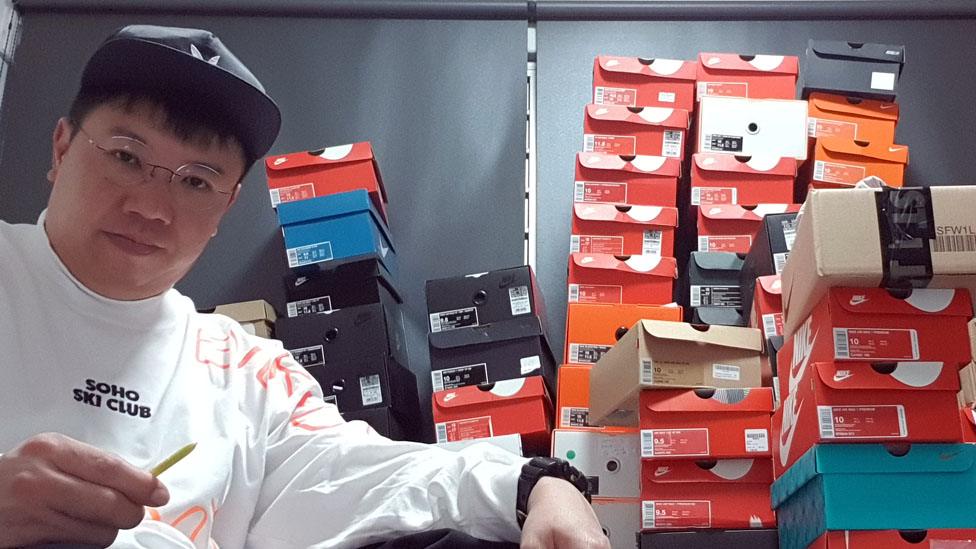Why 'hypebeasts' have fallen for Asian streetwear
- Published

A growing number of Asian streetwear labels are making waves globally
Flight attendant Marc Aw is a committed "hypebeast".
Before you possibly have to search online for what that slang word means, a hypebeast is someone who avidly buys and collects the latest clothing releases from the world of streetwear.
A specific fashion genre, streetwear is a style of comfortable, casual clothing inspire by skateboarding, surfing, hip-hop, punk and other subcultures.
Think hoodies, t-shirts, trainers, and tracksuit bottoms, but made in limited quantities by companies who aim for a distinct style and ethos.
It originated in the US before going global in the 1990s. Today the market is still led by US heavyweights such as Supreme and Stussy, but in recent years a growing number of new Asian labels have entered the sphere. And their sales are rising strongly.

Yeti Out says its clothes are inspired by "late night adventures"
"The thrill of discovering a small streetwear brand from Asia means I stand out in a saturated market, where everyone else wears the same thing," says Mr Aw.
The 40-year-old Singaporean spends up to $300 (£240) every month on Asian streetwear. "Supporting local brands is crucial for me, because if we don't wear them, then how do we expect the world to follow."
While a few Japanese labels have long had a presence on the global streetwear scene, the big growth in recent years has come from companies in other Asian nations, everywhere from China, to South Korea, Singapore, and even Indonesia.
Yeti Out, which is based in Hong Kong and Shanghai, says that global sales of its clothing doubled in the 12 months to March of this year. Annual sales at Jakarta-based Paradise Youth Club, are said to have risen by the same amount.

South Korea's Ader Error wants its clothes to "break down boundaries"
Jeremy Tan is the director of Culture Cartel, an annual street culture convention, held in Singapore. He says that Asian streetwear has grown in popularity around the globe because it is of an increasingly high standard.
"The world is looking east because of the tremendous amount of young talent that has emerged in recent years," says Mr Tan. "It is a reflection of Asia rising."
He adds that the big increase in the worldwide popularity of Asian streetwear has been further helped by fashion bloggers, and others in the online and social media sphere. He says that these individuals are increasingly focusing on Asian designers, who had previously been ignored by established fashion publications.
"Bloggers are turning lesser-known brands into big players in the market, giving new generation brands a chance to present themselves internationally," says Mr Tan.

Online sales are driving the success of Asian streetwear firms, but bricks-and-mortar demand is also said to be strong in their home markets
Joanna Lowry, a strategist for retail consultancy Fitch, says that the Asian labels are also benefitting from people's perennial desire to try something new.
"Seeking out fresh, unique pieces rather than just flashy logos from big name heritage brands is a major trend both within streetwear and the luxury market," she says. "A 20-something-year-old in London might not entirely understand the context of an Asian brand's products, but they might still purchase items based on the overall aesthetic."
While customers in the West may be buying Asian streetwear because they simply like a certain colour, shape or pattern, the labels themselves take their design ethos very seriously.
"A brand needs to be much more than just a graphic on T-shirts, it should be all encompassing, and represent a certain mentality." says Arthur Bray, co-founder of Yeti Out.
He explains that Asian club culture is a recurring theme across Yeti's clothing. "Late night adventures are often inspirations to our designs, whether that stems from a conversation we have at a dive bar in Bangkok, or funny things we see at 4am in Seoul."

Marc Aw says that Asian designers have benefited from the power of social media
At Paradise Youth Club, co-founder Vincentius Aditya says its designs explore human behaviour and digital technology. Its "Mind Benders" collection from 2017, for example, was said to be a reflection of how social media had turned into "a huge echo chamber... because we only see and hear what we like".
He adds: "The main inspiration comes from society, how people interact with each other, how they manage their time and relationships in this digital era."
South Korea's Ader Error has a similarly high brow aim for its unisex clothing. "Fashion... should serve to break down boundaries," says a spokesperson. "What we want to communicate [to is] all youths who seek new experiences."

Global Trade

While global online orders make up the bulk of sales for Asian streetwear labels, Major Drop, a bricks-and-mortar streetwear shop in Kuala Lumpur, the capital of Malaysia, says that their physical sales in its store now eclipse those of Western brands. It says it sold 22,504 items of Asian streetwear in 2018, compared with just 3,765 pieces from Western labels.
Back in Singapore, Marc Aw says he is particularly thrilled by the overseas success. "Asian streetwear has always been around, but social media has taken our designers further around the world."